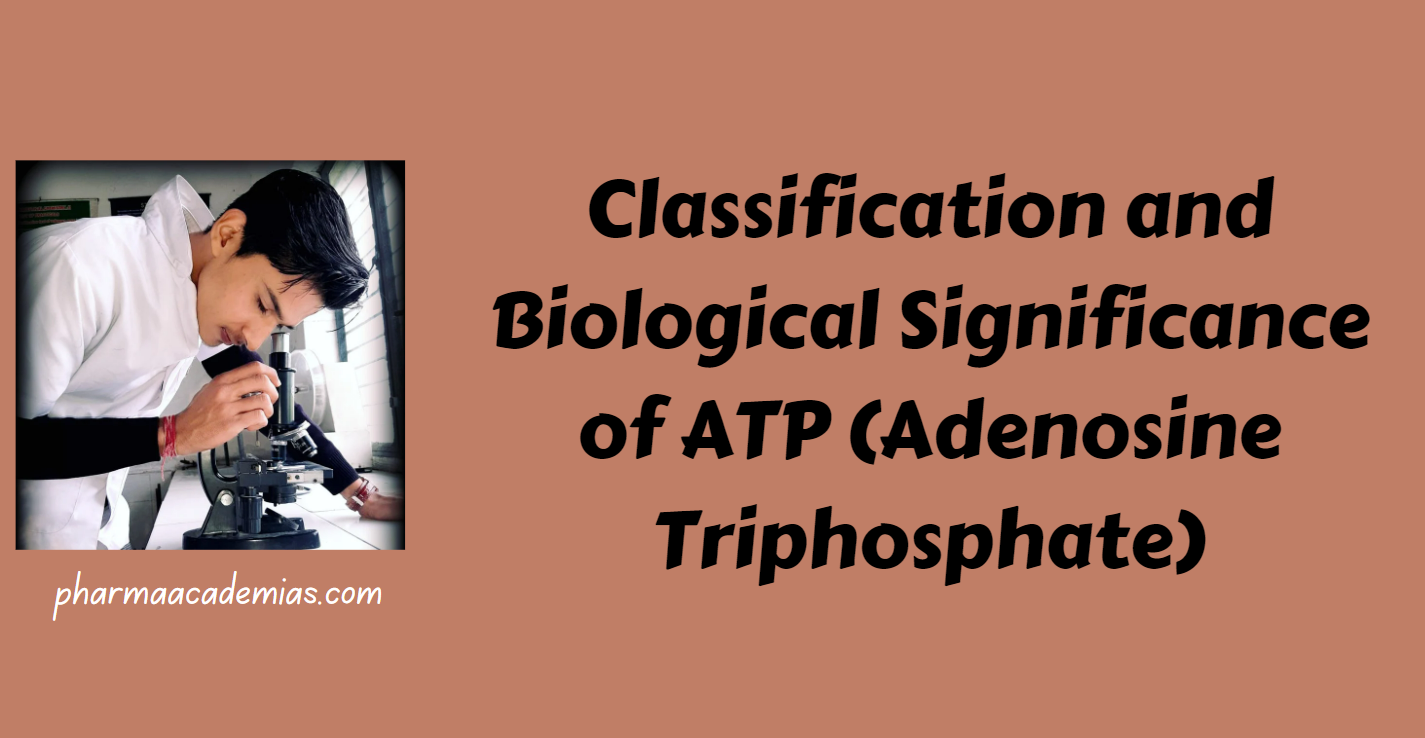Adenosine Triphosphate (ATP) is a high-energy molecule that serves as the primary energy carrier in cells. It provides the necessary energy for various biological processes, including muscle contraction, nerve impulse transmission, biosynthesis, and active transport.
1. Classification
Chemical Nature: ATP is a nucleotide derivative composed of three components:
Adenine: A nitrogenous base derived from purine, essential for nucleotide formation.
Ribose: A five-carbon sugar that forms the backbone of ATP and connects adenine to the phosphate groups.
Triphosphate Group: Three phosphate groups linked together by high-energy phosphoanhydride bonds. These bonds store potential energy that is released during ATP hydrolysis, driving various cellular activities.
Energy Storage: ATP is classified as an energy carrier or high-energy compound due to high-energy phosphate bonds.
2. Biological Significances
Energy Currency of the Cell:
ATP serves as the primary energy currency in biological systems.
Energy from catabolic processes synthesizes ATP, and ATP breakdown releases energy for cellular work.
Cellular Work:
ATP powers various cellular activities, including:
Mechanical Work: Muscle contraction, cilia, and flagella movement.
Transport Work: Active transport of ions and molecules across cell membranes.
Chemical Work: Biosynthetic reactions, such as DNA, RNA, and protein synthesis.
Electrochemical Gradient Maintenance:
Cells utilize ATP to pump ions across cell membranes, contributing to the establishment and maintenance of electrochemical gradients.
For example, the sodium-potassium pump helps maintain the resting membrane potential in neurons.
Signal Transduction:
ATP is involved in signal transduction pathways.
Phosphorylation of proteins by ATP can activate or deactivate enzymes, influencing cellular responses.
Metabolic Reactions:
Many metabolic pathways involve the transfer of phosphate groups from ATP to other molecules, activating them for further reactions.
An example is the phosphorylation of glucose during glycolysis.
Coupling of Reactions:
ATP is an intermediate that couples energy-releasing reactions (exergonic) with energy-requiring reactions (endergonic).
This coupling ensures the efficiency of energy utilization in the cell.
Enzyme Activation:
ATP is involved in the activation of enzymes through phosphorylation.
Phosphorylation often changes the conformation of enzymes, making them more or less active.
RNA Synthesis:
ATP is essential for the polymerization of RNA during transcription.
It provides energy for the formation of phosphodiester bonds between nucleotides.
Cell Division:
ATP plays a crucial role in mitosis and meiosis.
It is required for processes like spindle fiber formation and chromosome movement.
Heat Production:
The hydrolysis of ATP can release small amounts of heat, contributing to maintaining body temperature.
ATP Analogues in Research
Researchers use analogues of ATP in biochemical and molecular biology studies to investigate enzymatic reactions and cellular processes.
ATP is a versatile and essential molecule in living organisms, acting as a universal energy carrier that facilitates a wide range of cellular activities. Its role in energy transfer, coupled reactions, and cellular work make it a cornerstone in bioenergetics and cellular physiology.


 Pharmacy Students & Aspirants
Pharmacy Students & Aspirants